Fishing Small Spoons for Lockjaw Chinook & Coho Salmon
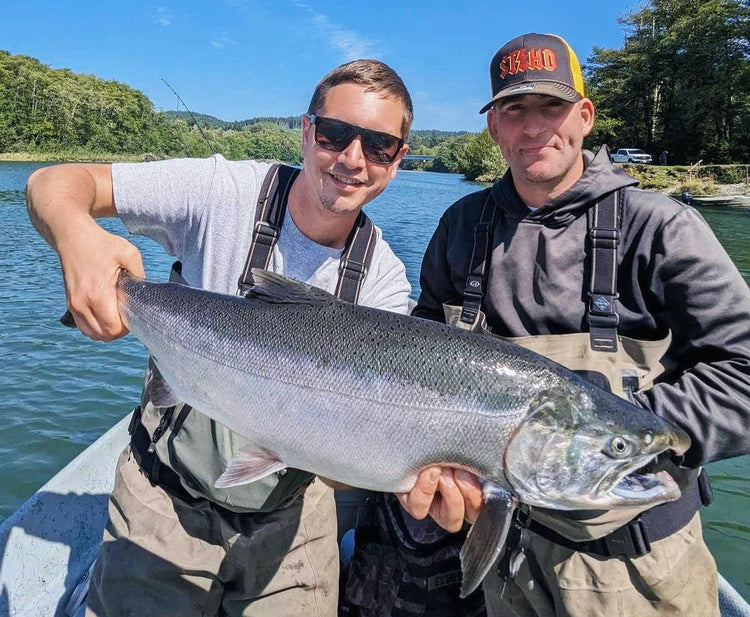
If you've been a student of Salmon and Steelhead fishing on the Pacific Coast or Great Lakes, you've likely ran into articles by the author of "Spoon Fishing for Steelhead" himself, Bill Herzog. From Bill's classic Frank Amato Publications books, to videos on our Addicted Channel, you'll find an abundance of tips and techniques to dial in your "spoon-game" for Salmon and Steelhead.

The author and Shane Holmgren casting small spoons on ultra-light rods.
In a majority of fisheries and conditions people are typically using spoons like the Little Cleo or BC Steel in 1/3, 2/5 or 2/3 when "swinging" spoons. However - in this article, I'll be presenting a spoon technique for Salmon specifically that is much more niche. And through most of the year, it's not even necessary or ideal.
But where this spoon technique is needed, it shines.
Fishing Small Spoons for Salmon
Conditions
When the water is up and the bite is on, a loud pink spinner or heavy spoon may be the ticket to get an aggressive Coho to chase it down. But what about those days when the water is clear, the fish are there and they aren't biting a thing?

The author caught this A-Run Hatchery Coho on a 1/6 oz. Little Cleo Spoon out of a Kayak
First of all, there needs to be an adjustment of expectations based on the fishery. For instance in Southwest Washington, if it's mid October and there's 30 fresh Coho Salmon rolling into the hole, I'd expect that I could throw many types of lures and get several bites.
But in that early season when tributary Coho are entering low, clear and often warm waters, they are known to turn their nose up at just about any lure.
With that in mind, finding a "silver bullet" is rare, although it exists at times. Often it's the tide or time of day that determines when the fish are going to start snapping on traditional lures like spinners, wiggle warts or twitching jigs.
For those lockjaw Salmon, often going to bait can change the game, but sometimes they aren't interested in bait either.

The "Little Cleo" in 50/50 colors is the most reliable multi-species spoon I've ever fished - View Little Cleo Color & Size Options at FishUSA.com
Anglers on Puget Sound tidewater rivers near Seattle have perfected this "little spoon fishing" for A-Run Coho which are traditionally lockjawed. They side-drift the smallest size of Dick-Nite in half and half colors on a leader that's probably about 4-5 feet long from sleds or driftboats. Smaller diameter leaders are necessary to allow the small spoon to move freely.
As the weight taps bottom periodically, the little spoon will tumble and flash, but due to the small size it is very unobtrusive and non-threatening.
If anything it's an annoyance not a threat.
Around 2013, I got to fish this technique with Marlin and Rob M in the early days of Addicted (Known as "Fishing Addicts Northwest" back then).
We fished with Scotty Landis in his sled, in tidewater of a major Puget Sound river. Scotty kept in contact with his guide buddies throughout the morning and they optimized their information to stay on top of biting fish. It was an unreal bite that morning, keeping limits of chrome Coho, and releasing several others.

We used shorter fast action spinning rods, casting out in order like we would side-drifting eggs for Steelhead. The weight would tick the bottom every 4-8 feet while that little spoon tumbled in the current.
The bites could be strong, but weren't earth-shattering yanks every time, often it would just stop and you'd pull back wondering if you hung up, as soon as the fish felt the line go tight, they'd start head-shaking and shoot off like a rocket. This really changed my perspective on Salmon fishing, and since that day it's changed the way I fish for pre-rainy season Salmon.
Since that trip in 2013, I've experimented with smaller spoons and spinners in early Fall for two reasons:
- Sea-Run Cutthroat are entering rivers during the same time as Fall Chinook & Coho and they love spoons of many sizes.
- Salmon that won't bite traditional size lures will sometimes bite a small spoon or spinner.
- Fly angler Jim Teeny popularized the usage of a small "teeny fly" for big fish, and I've watched Chinook gobble small jigs and flies in clear water.
And the results?
Every single Summer without fail, if I bring some trout spoons or spinners with, I'll end up tangling with a big Chinook or Coho. Interestingly, though I have caught Summer Steelhead this way, it tends to be surprise Salmon more often, most likely due to being around numbers of Salmon. This has happened in small Coastal creeks, large dam-controlled rivers, and I've even landed Chinook and Coho Salmon trolling small spoons behind 360 Shortbus flashers!

This Fall Chinook was caught on a Blue Fox, casted with a light-action spinning rod and 8lb test.
Rigging Small Spoons
Other than when I use the smallest spoons like Dick-Nite, I generally am not using a sinker with my spoons - even when using small ones like 1/6 or 1/4 Little Cleo's. I will simply go with the lightest leader I can get away with (often 12lb Flouro on a lighter Steelhead rod so I can cast far) and then tie to the spoon with a palomar knot.
Contrary to what I do with larger spoons, I don't usually add a split ring and swivel to the line end of the spoon.
The reason is - a lighter leader palomer knot tied to the spoon gives the best wobble action, freely flashing in the current. Knot strength is usually more than sufficient as long as I don't fish too tight of a drag.
I've got a very high ratio of landing Salmon on light action rods surprisingly, and I believe it's because they don't feel the pressure as much. If I put the wood to a Chinook with a 5/0 hook on a 15-30lb rated rod, they will burn line like crazy.
To cast these spoons I'm almost always using medium action (or less) rods, so this technique is only to be used in areas where you have plenty of room to fight the fish.
However, if you aren't yanking on the fish with a stout rod, you may be surprised to find that they tend to not fight as hard as they sometimes do. You can let them run a bit, then gently lead them back towards you and often they will seem confused and swim around until eventually getting close enough to net.
Just a few days before the writing of this article, I was out with Jordan Knigge and Robert Field of Field Trips (Popular Youtube Kayak Fishing Channel). Although we weren't going to be targeting Trout, I insisted on bringing Marlin's Okuma Ultra-light rod with Addicted Enforcer braid and a 1/6 oz. Little Cleo I had tied on. As it was my first trip in a Kayak for Salmon, I was learning how to operate and fish from the Kayak itself, but I had fished the area before from a boat so I was familiar with the depth and bottom structure.
After trying just about every lure imagine-able, I saw a Coho roll on the surface. About ten years ago, my good friend and All Around Angler originator Chris Heller told me that "If you see a Coho kind of 'sip' the surface or just swirl, cast just upstream of it. Those are the biters." That same season he told me, I had it happen a number of times. A tidewater Coho would swirl or sip, I'd cast 10 feet upstream and BOOM.
As I was pedaling the Kayak that Next Adventure kindly let me use, I took out the 1/6 oz. Little Cleo. I had not attached a swivel to the split ring, and had simply tied the 12lb flourocarbon leader to the split ring with a palomer knot.
A few fresh A-Run Coho had been moving through, showing themselves but quickly migrating upriver. A few casts after taking out the Trout rod, I saw a chromer do a roll just on the surface of the water.
I casted a good 15 foot upriver of the Coho while slowly drifting backward. As soon as the spoon landed I let it fall with the bail open for a few seconds before closing the bail and bringing the line tight. Then I reeled slowly so the Little Cleo tumbled in the water column about halfway between surface and bottom. As I reeled it slowly it stopped and I felt the line go tight. Again, no vicious bite, just the Salmon closing its mouth around the small spoon.
I "knew" it was a fish and was ready for it.
I pulled back on the ultra-light in a moderate but quick hookset. Once the fish felt the hookset it started headshaking and making bursts in various directions. The fight was on and I yelled out to Jordan who came upriver and netted my first Coho from a Kayak ever.
The strange thing is although I am always excited to catch a Salmon on a Trout lure, I've not really been surprised by it.
Watch the Video Below:
I've been targeting Sea Run Cutthroat in Lower Columbia Coastal rivers and had Chinook who'd just entered the river engulf spoons like Al's Goldfish, Little Cleo's or black and gold Rooster Tails.
I remember seeing Rob Mclroy a decade ago finesse a Chinook from a pod that wouldn't bite anything including eggs, with a small fixed float and a very small black jig. The Chinook moved just slightly and opened its mouth, closed it and didn't move until Rob set the hook. Right in plain sight.
I've spoken with Jim Teeny and his "Teeny Nymphs" are another example of small, buggy lures that are an easy enough meal for a Salmon to decide to munch.
Small Spoon Success Factors
Color and finish are a massive factor. It's not only the size of the lure but whether or not the flash is natural or enticing. A small spoon in a loud pink and chartreuse color might be the ticket on certain fisheries, or it might totally turn off a fish.
Coho do seem to love contrast so mixing a more subtle metal like copper, gold or nickel with a bright color can be excellent on very small spoons.
Generally in low clear water in the Northwest I'm going to stick with my favorites on small spoons: 50/50 Blue/Silver (Sometimes I like to add a small red eye) Copper, Copper/Silver, Gold/Silver, Black, Black/Silver. Then I may play around with other colors like pink, purple, chartreuse...but generally just those metal finishes on a Little Cleo are all you need to get that little flash going.
Size of spoon can make or break a bite. This is not simply because of the size the fish prefers to bite, but how the size of the lure affects the action and depth it gets to.
Small spoons can get down fairly quick if your line diameter is small enough and they aren't being pulled in another direction.
Angles are everything. Where you cast your spoon to, how you retrieve and how it moves through the water are HUGE when it comes to getting a bite.
Baitfish will generally tumble downstream as they die, so instead of "swinging" the spoon through a run, I'm often casting up stream, letting it fall for a second or two, then bringing the line tight and slowly reeling so the lure moves downstream diagonally flashing the whole way.
Often casting upstream is necessary to get the lure even down into the strike zone.
Even though Coho will swim for a lure, getting smaller spoons into the bottom half, or ideally bottom third of the water column is essential. For Chinook, they need to be right down near the deck more often.

Although this Pink Salmon is in "for release only" condition, I watched it swim ten feet to intercept a copper spoon in clear water.
When to Fish Small Spoons for Salmon
You'd be surprised at how often I've ended up hooking multiple larger species on small lures. Typically however, this is a technique especially for low-clear water conditions.
Tidewater areas especially can be the ideal space to fish small flashing hardware. As you move up-river, there are times when small spoons and spinners are highly effective for fishing smaller holes and runs without spooking fish.
In upper-river situations, often if the water is clear it is best to approach the hole from below, cast upstream and reel back. This change of angle can totally turn on a bite, as the angle of the spoon swimming and speed can trigger a fish to bite that wouldn't normally eat a "swung" spoon.
Sometimes, fish are just lockjawed - so don't only try this technique when nothing else works, try it when other things are working and see if you can find a spot to use a small spoon for big fish!
- written by Lucas Holmgren (Outdoor Writer, Musician & Addicted ECommerce)

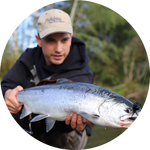


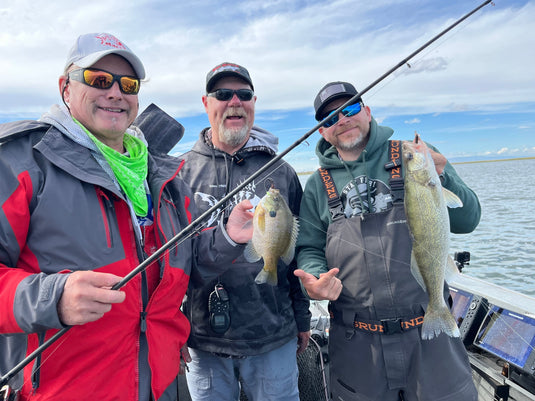

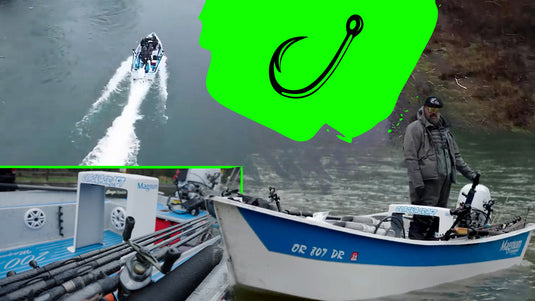

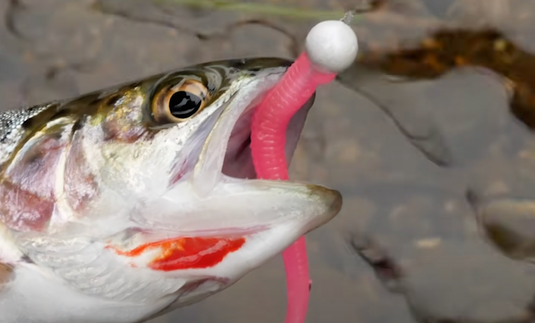
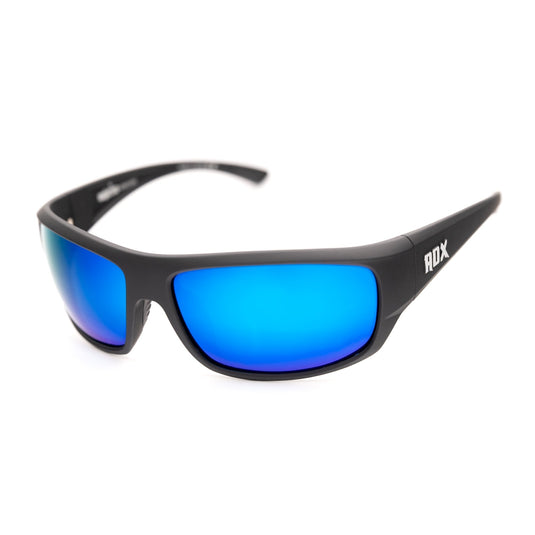
I have some of the smaller Little Cleo spoons in my spoon box. I’ll have to remember to use them when the fish aren’t taking the larger spoons. Thanks!